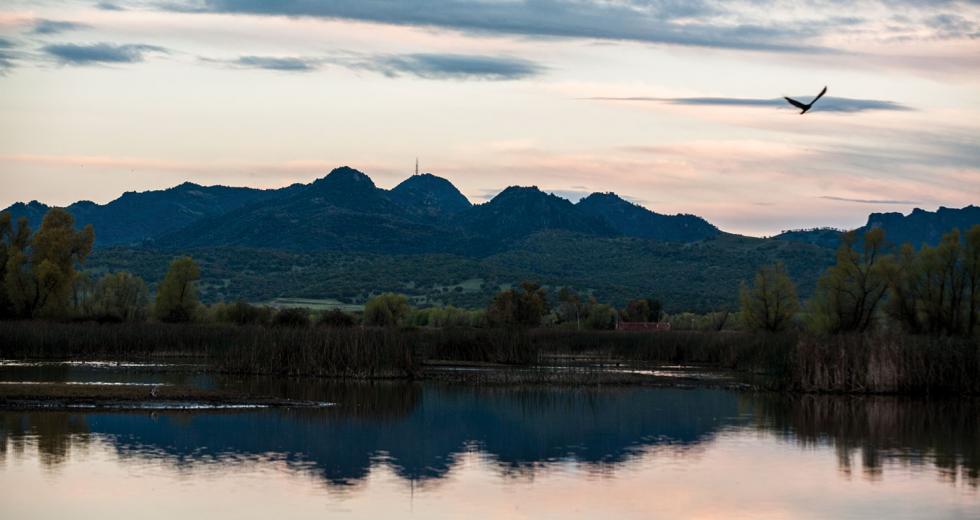The future of community growth in the Capital Region hinges on the fate of several habitat conservation plans slogging through the development pipeline. A number of counties in the region have worked nearly a decade or more to create comprehensive, streamlined conservation plans that determine land use, permit requirements, infrastructure patterns and developer fees in one swoop.
Experts say the existing permitting process is time consuming and inefficient due to overlapping layers of regulation by numerous government agencies with varying priorities. This bleeds millions of dollars from developers and environmental planners alike.
“That creates a tangle of red tape and a long, expensive and litigious process that is incredibly inefficient and difficult to coordinate with local planning,” says Bob Shattuck, director of community planning for Lennar Communities. “It can add years to the process and cost hundreds of thousands, if not millions, of dollars. It creates a lot of additional work for lawyers and consultants, but the money is spent on paper and process, not conservation.”
Under the new strategy, developers would receive expedited project permits and, in exchange, pay mitigation fees that allow local governments to carve out protected land.
In recent years, though, factors delaying plans’ completion have included slow response times from understaffed wildlife agencies, departure of key agency personnel and, most urgently, a sharp decline in public money for conservation planning.
The stakes of delayed conservation plans could not be higher, say representatives of the local governments and public groups working to develop the region’s long-term land-use strategies.
Mike McKeever, executive director of the Sacramento Area Council of Governments, points to areas such as southeast Sacramento County and southwest Placer County as regions that demand habitat conservation plans (HCPs) in order to ensure long-term economic vitality. In these regional job centers, he says, valuable environmental resources like vernal pools and endangered species compete with a growing demand for worker housing.
“In such a tight financial environment, there is limited funding for regulatory reform that will save everyone a lot of money down the road,” he says. “I fear that if the HCPs don’t succeed, you’ll have a stalemate (between environmental protection interests and developers), and market demand for housing will skip over the areas that are adjacent to job centers and go further afield.
“If that happens and more people are commuting 20 to 30 miles every day — we simply don’t have the money to build long highways to transport people to work.”
Other stakeholders, too, support coordinated wetland permitting for large, specific plans as a critical and necessary component of smart regional development.
“Planning in the area is coordinated through large, specific plans, and much of the habitat planning through the [Placer County Conservation Plan] overlaps with wetland permitting,” says Doug Elmets, a spokesman for the Placer Vineyards development, a massive, master-planned community west of Roseville. “If wetland permitting for specific plans is not covered, then the PCCP will be of limited value, and it will become much more difficult to implement a coordinated conservation strategy for the area.”
Cost and complexities of environmental planning have made it unpopular with many federal lawmakers zealous for deficit reduction. This year, Congress slashed by more than 50 percent the grant funding under Section 6 of the federal Endangered Species Act, on which many jurisdictions rely to design their conservation plans and acquire land. In the early 2000s the grant budget was near $100 million; it’s now $47.7 million.
The state and federal agencies charged with reviewing habitat conservation plans also have been walloped by funding decreases: The budget for the Sacramento field office of the U.S. Fish and Wildlife Service, which enforces the Endangered Species Act, has been flat since 2007, and staffing levels have fallen as a result. The office, which also covers Nevada, is reviewing 118 plans. Since the agency’s five staff members can only work on four or five plans at a time, the number poses a significant backlog.
Maria Wong, who heads the Yolo County Natural Heritage Plan, an environmental group that acts as an intermediary between developers and government agencies, says plans in which the fight between development and conservation is most contentious get the most attention. She says progress on the Yolo plan, which started in 2002 and focuses mainly on preserving the county’s current agricultural land-use patterns, has been hindered as a result.
“We don’t have an immediate crisis to address, and that has slowed progress on our plan. It’s easy for the agencies to focus on plans where there is a crisis,” Wong says.
Wong cites the Bay Delta Conservation Plan (BDCP), the controversial effort to restore the health of several endangered species in the Sacramento-San Joaquin Delta while overhauling the dams and canals that transport Delta water to two-thirds of the state’s population. The declining health of fish species in the Delta has led to sporadic restrictions on water pumping there, raising the ire of farmers and water districts in the Central Valley and the southland that depends on it.
“[The Bay Delta Conservation Plan] is important to the feds, the state and the water contractors and siphoned off many of the experienced agency staff to work on that plan,” Wong says. “Many of us feel that BDCP is the favored child of the agencies, as it seems to get more attention than the other plans.”
Many plans in the area have been further hobbled by staff turnover at the wildlife agencies. Because of the multiyear timeline of conservation projects, rarely does the agency staffer who starts a plan finish it, Wong says. And frequently, understanding of history and minutia of a project leaves with departing or replaced staff members.
“We went through four or five staff people at U.S. Fish and Wildlife alone, and that cost us four or five years,” says Chris Lee of Solano County. “This process … should take four to five years total.”
The Solano plan has taken 12 years; Lee says he expects a draft to be available for public review by summer.
Despite the obstacles, regional planners and developers alike defend the need for a better approach.
“To be of real value, the combined process (wetlands and endangered species permitting under HCPS) needs to apply to specific plans and large infrastructure projects, since that is how most planning is done in the area,” Shattuck says.
“Unfortunately, I think it is still an open question whether we will end up with a truly coordinated wetland permitting process. If not, the HCP will be a big disappointment after all of these years.”
Recommended For You

Safety Nest
Animal Place provides sanctuary for unwanted animals
Kim Sturla’s biggest challenge isn’t caring for thousands of animals at a time. It’s trying to get people to think about a pig’s life in the same way they would think about a dog’s.

Call of the Wild
A long-awaited conservation plan in the south county
South of Mather Airport is a grassy field popular with nature lovers and school field trips, particularly in the spring when the vernal pools are in bloom.



